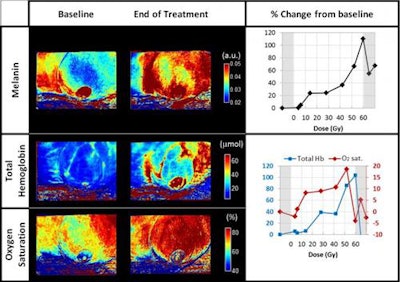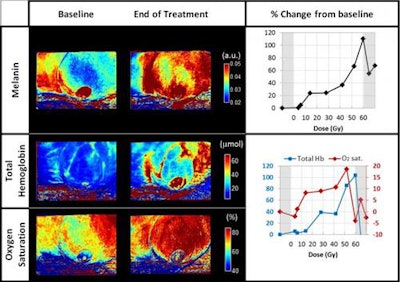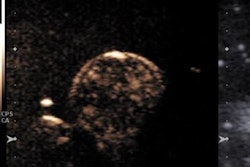
Researchers from the University of California, Irvine (UCI) are testing a new, noninvasive imaging device that could help predict skin damage effects from breast cancer radiation therapy (RT).
UCI's Beckman Laser Institute and Medical Clinic and its department of radiation oncology are conducting a study to monitor, quantify, and perhaps forecast skin toxicity levels induced by radiation therapy using a device that consists of eight different wavelengths of visible and near-infrared light from light-emitting diodes (LEDs).
Developed by Modulated Imaging of Irvine, the device measures how much energy is absorbed by the skin when it is exposed to radiation with a technique called spatial frequency domain imaging (SFDI), the university said in a statement.
The lead author of the study, Anaïs Leproux, PhD, will present preliminary results from the research at the upcoming OSA Biophotonics Congress in San Diego.
 SFDI of melanin, total hemoglobin, and oxygen saturation of the treated breast of a 49-year-old patient at baseline and at the end of radiation treatment. Right panels show the percent change from baseline of melanin (top) and total hemoglobin and oxygen saturation (bottom). Image courtesy of Anaïs Leproux, PhD, and the Beckman Laser Institute and Medical Clinic.
SFDI of melanin, total hemoglobin, and oxygen saturation of the treated breast of a 49-year-old patient at baseline and at the end of radiation treatment. Right panels show the percent change from baseline of melanin (top) and total hemoglobin and oxygen saturation (bottom). Image courtesy of Anaïs Leproux, PhD, and the Beckman Laser Institute and Medical Clinic.


















